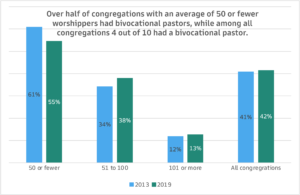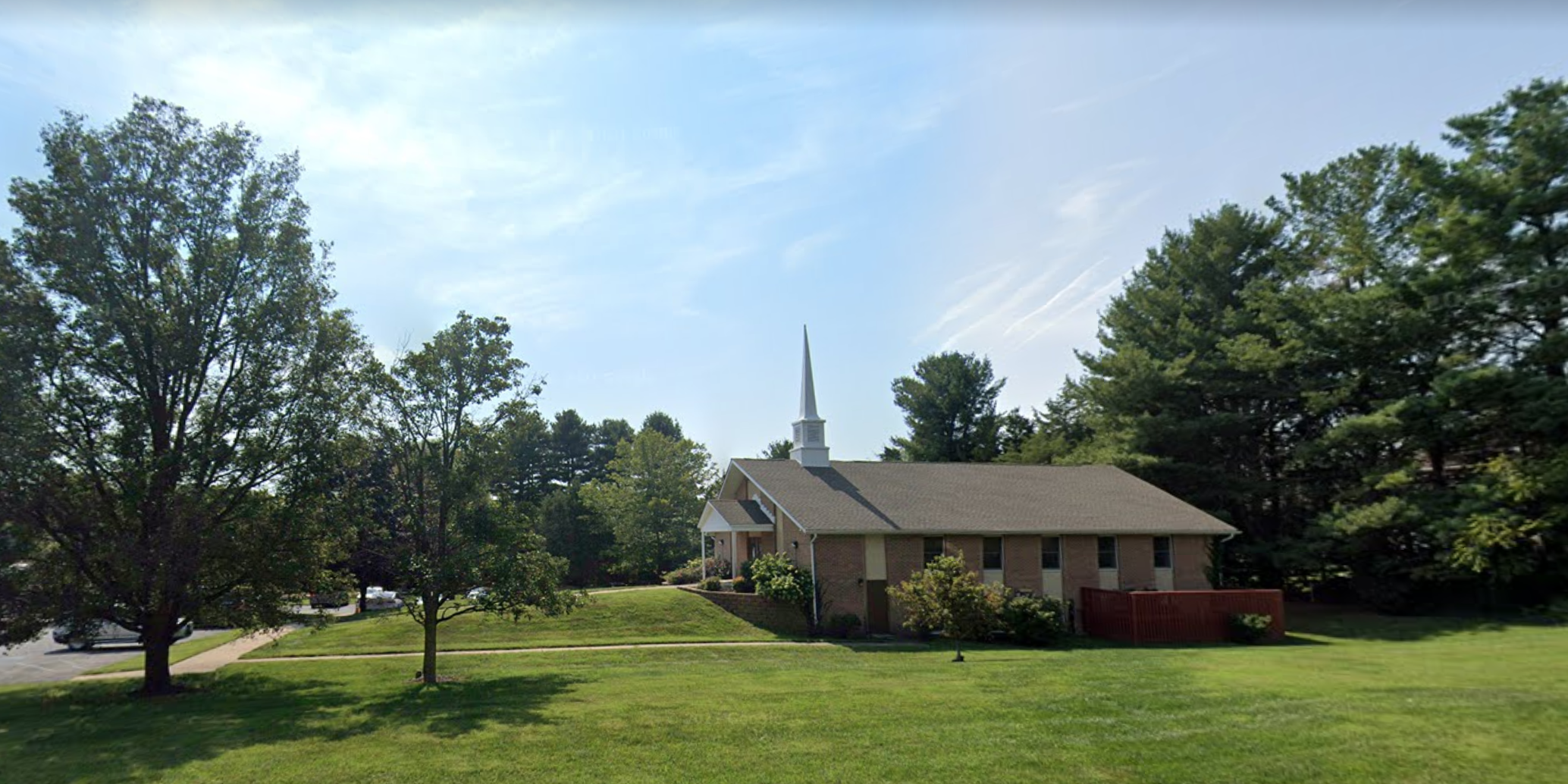Over the past several decades, the average weekly worship attendance of Christian congregations has been decreasing. In 1998, the median number of regular participants of Christian congregations in the United States was 80 people[1], and by 2018-19 this had dropped to 70 participants for the average congregation[2].
Smaller congregations usually have fewer financial resources and may not be able to hire a full-time pastor. There are a variety of ways in which smaller congregations fill their pastoral positions. Some are led by pastors who serve multiple congregations, while others are led by part-time, bi-vocational pastors who also work at an occupation outside of pastoral ministry. Still others are led by volunteers, whether unpaid lay members or retired pastors.
Congregations of the Church of the Nazarene, like many congregations, have been shrinking, and so have their financial resources. In 2000, the typical Nazarene church had a median weekly worship attendance of 63 people and a total budget of around $66,300. By 2019, this had decreased to 45 worshippers and a total budget of around $43,400 (adjusted for inflation)[3]. And like many congregations, they have found alternative ways to fill their pastor positions besides hiring a full-time paid pastor. Let’s take a look at how they do this.
1. The most common way for small Nazarene churches to fill their pastoral positions is through hiring bi-vocational clergy.

- About 4 out of 10 Nazarene congregations had a bi-vocational pastor in 2013, and this was still true in 2019[4].
- In 2019, over half of congregations with an average of 50 or fewer worshippers had a bi-vocational pastor. This was also true in 2013, although the percentage of small churches with a bi-vocational pastor was higher then.
2. Congregations with a solo pastor who is bi-vocational tend to be smaller and have fewer financial resources than congregations with a solo pastor who is not bi-vocational.
| Pastor is bi-vocational? | Median worship attendance | Median total expenditures |
| Yes | 31 | $34,207 |
| No | 46 | $73,844 |
Data is from 2019.
- In 2019, congregations with a solo, bi-vocational pastor had a median worship attendance that was two-thirds of that of congregations with a solo pastor who was not bi-vocational.
- In 2019, congregations with a solo, bi-vocational pastor also tended to have smaller budgets than congregations with a solo pastor who did not have a second job. Total expenditures of congregations with a bi-vocational pastor were less than half the expenditures of congregations with a solo pastor who was not bi-vocational.
3. Very few congregations have a pastor who also serves another congregation, even among the smallest churches.
- In 2019, the percentage of all Nazarene congregations that had a pastor who served another congregation was 3.5 percent.
- In the same year, only 4 percent of congregations with 50 or fewer in average worship attendance had a pastor who also served another congregation.
4. Congregations that share a pastor with at least one other congregation tend to be smaller and have fewer financial resources than congregations that do not share their pastor with another congregation. They also tend to be smaller than congregations with a solo, bi-vocational pastor.
| Pastor serves multiple congregations? | Median worship attendance | Median total expenditures |
| Yes | 15 | $14,406 |
| No | 38 | $49,183 |
Data is from 2019.
- Among congregations that had a solo pastor in 2019, those that shared their pastor with another church had a median worship attendance that was less than half that of congregations that did not share their pastor with another church.
- Congregations with a shared pastor arrangement also had median total expenditures that were less than a third of the expenditures of congregations that were not in shared pastor arrangements.
5. Bi-vocational pastors and those who are not bi-vocational pastors are equally likely to serve more than one congregation.
- Among all Nazarene congregations, 4 percent of bi-vocational pastors and 3 percent of pastors who were not bi-vocational served more than one congregation.
- Even among congregations with a solo pastor, only 5 percent of bi-vocational pastors and 4 percent of pastors who were not bi-vocational served more than one congregation.
[1] Chaves, Mark, American Religion: Contemporary Trends, 2nd ed. (Princeton, NJ: Princeton University Press, 2017), 58-59, 71-73.
[2] Chaves, Mark , Joseph Roso, Anna Holleman, and Mary Hawkins. 2021. Congregations in 21st Century America. (Durham, NC: Duke University, Department of Sociology, 2021), 10.
[3] Church of the Nazarene data were generously provided to us by the Rev. Richard Houseal, Ed.D., Director of Research Services, Church of the Nazarene Global Ministry Center.
[4] Data on whether or not pastors are bi-vocational are available from 2013 to 2019, while data on all other pastor and congregational characteristics are available from 2000 to 2019.







